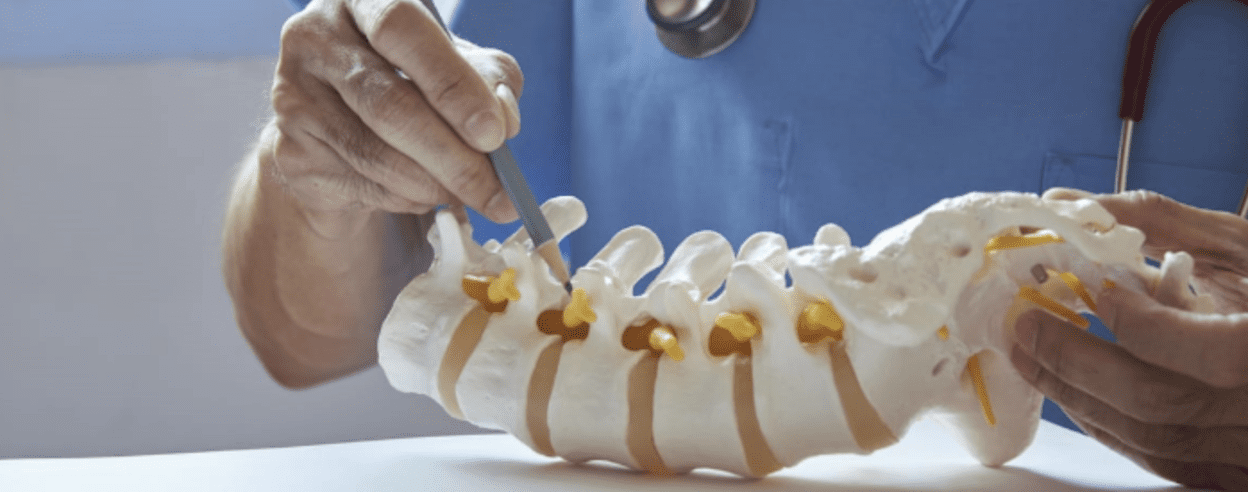Spinal stenosis occurs when the spaces within the spine narrow, resulting in pressure on the nerves running through the spinal column. The condition often develops in the lower back (lumbar stenosis) or neck (cervical stenosis).
People with spinal stenosis may not experience any symptoms, while others have pain, muscle weakness, numbness, and tingling. The condition is typically a result of osteoarthritis, the wear-and-tear deterioration of joints that occurs over time. Some doctors may recommend surgery to create additional space for the nerves.
Spinal Stenosis Symptoms
The symptoms of spinal stenosis may vary based on where the issue is located.
Symptoms of Cervical Stenosis
With stenosis of the upper spine or neck region, patients often experience:
- Weakness in the extremities, such as a hand, foot, arm, or leg
- Balance issues
- Numbness or tingling in the extremities
- Neck pain
- Bowel or bladder issues in extreme cases
Symptoms of Lumbar Stenosis
When stenosis occurs in the lower back, patients may have:
- Weakness or numbness in the foot or leg
- Pain or cramping in one or both legs while walking or after long periods of standing
- Back pain
Causes of Spinal Stenosis
Some people are naturally born with a narrow spinal canal, but in many cases, spinal stenosis is a result of outside factors that have caused the narrowing. Possible reasons for stenosis may include:
- A herniated disk: The soft cushions between vertebrae often dry out and are less able to absorb shock over time. If a disk’s exterior cracks, the material may escape and put pressure on the nerves or spinal cord.
- Bone overgrowth: Osteoarthritis is commonly associated with bone spurs, which can make their way into the spinal canal. Paget’s disease, a bone disorder, can also result in bone overgrowth.
- Ligament thickening: The cords that hold the spine together may thicken over time, bulging into the spinal column and creating pressure on nerves.
- Spinal injuries: Trauma caused by car accidents and other injuries can damage the vertebrae, leading to issues such as displaced bone or fractures that can impact the spinal canal. Also, the swelling of tissue following back surgery can put pressure on the nerves in the spine.
- Tumors: Development of tumors in the spinal cord’s membranes can also occur, though they are uncommon.
In addition to these causes, certain factors also increase a person’s risk for spinal stenosis. Being over the age of 50, experiencing a back injury, and having a congenital spinal deformity such as scoliosis are all considered risk factors. Genetic diseases that impact bone or muscle development can also lead to spinal stenosis. If you want to learn more then contact a care coordinator today!


 St. Petersburg, Florida
St. Petersburg, Florida
